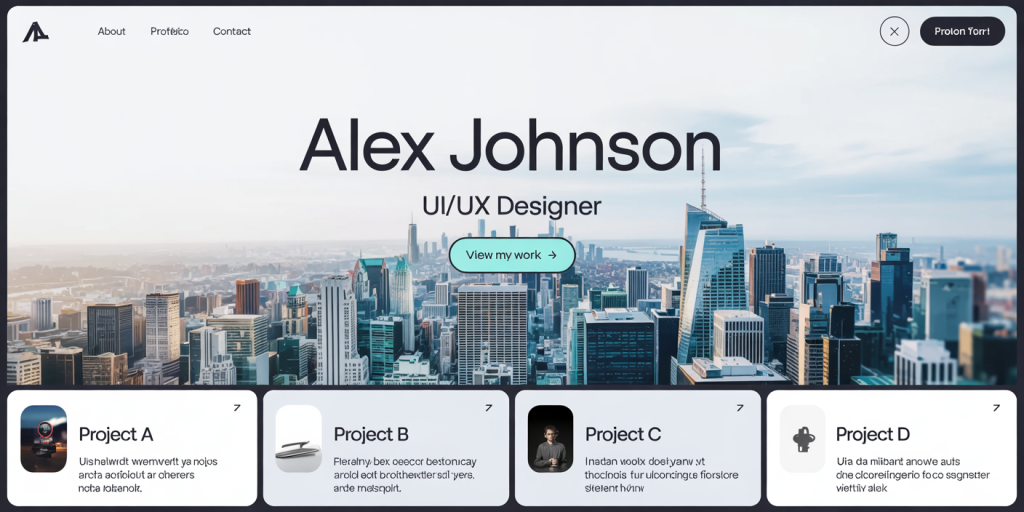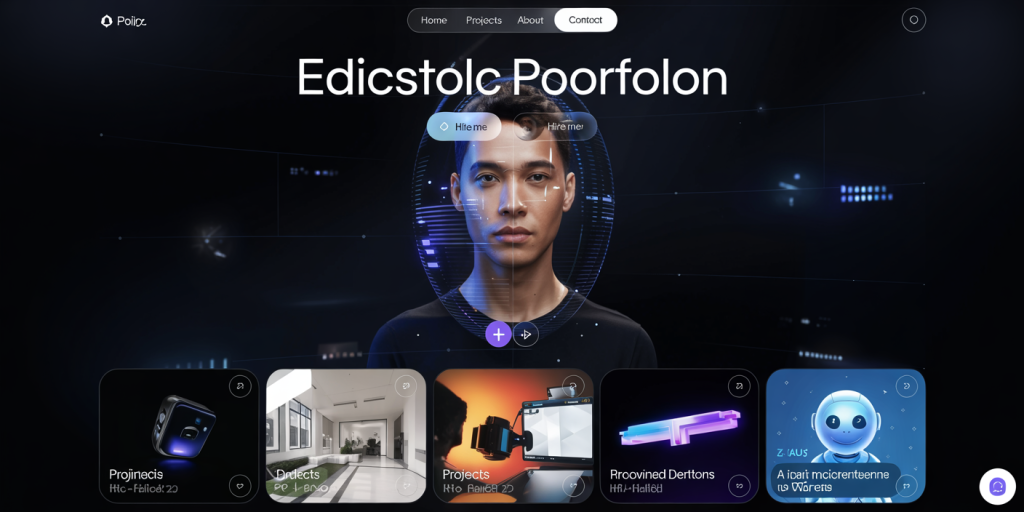Creating a Professional Portfolio Website That Impresses
In the digital era, having a professional portfolio website is no longer a luxury but a necessity for creatives, freelancers, and professionals across industries. It’s often the first impression potential clients, employers, or collaborators get about your work, skills, and professionalism. According to a recent survey by CareerBuilder, 70% of employers use social media to screen candidates during the hiring process, underscoring the importance of a strong online presence. A well-structured portfolio website not only showcases your capability but also elevates your brand image and accessibility.
Building a professional portfolio website that impresses requires a blend of design aesthetics, functional user experience, and meaningful content. This article delves into the essential components and strategies for creating a portfolio that stands out, supported by practical examples, data insights, and comparative analysis.
Understanding the Purpose and Audience of Your Portfolio
Before diving into design and content, it’s crucial to clarify the purpose of your portfolio website. Are you aiming to attract freelance clients, secure a full-time job, or pitch for creative collaborations? Each goal dictates a different approach to content presentation, tone, and functionality. For example, a freelance graphic designer might focus heavily on visual projects with detailed case studies, while a software developer might prioritize showcasing code repositories and technical achievements.
Knowing your audience deeply influences the site’s architecture. Studies show that websites tailored to specific user needs experience a 33% higher engagement rate than generic ones (HubSpot, 2023). For instance, if your audience includes recruiters in competitive industries like advertising, emphasizing awards, testimonials, and a strong personal brand can significantly boost your appeal.
Real Case: Jessica Walsh, a renowned graphic designer, maintains a portfolio website that is vibrant, bold, and visually captivating, reflecting her brand identity. It clearly targets design clients looking for innovative and personalized work, showing the importance of audience-aligned presentation.
Designing for User Experience and Visual Impact
A professional portfolio must marry aesthetics with usability. Research from Adobe indicates that 38% of users will stop engaging with a website if the layout or content is unattractive. Clean navigation, fast load times, and mobile responsiveness are critical to retaining visitors.
Start with a simple, intuitive navigation menu with sections like “About Me,” “Work,” “Skills,” and “Contact.” Avoid overwhelming visitors with too many options. The homepage should include a hero section that encapsulates who you are and what you offer, reinforced by a compelling call-to-action (CTA).
A comparative table showcasing key design elements can help align your choices with best practices:
| Design Element | Effective Implementation | Common Pitfall |
|---|---|---|
| Navigation | Clear, minimal, consistent | Overloaded menus, hidden links |
| Load Speed | Optimization; image compression; caching | Large unoptimized files |
| Mobile Responsiveness | Responsive design frameworks (e.g., Bootstrap) | Desktop-only layouts |
| Visual Consistency | Cohesive color scheme and typography | Clashing colors, mixed fonts |
Applying these principles, Kate Andrews, a UX designer, enhanced her portfolio’s load speed from 8 seconds to under 2 seconds by integrating image compression and lazy loading. Consequently, her bounce rate decreased by 45%, showcasing practical benefits.

Showcasing Work Effectively with Case Studies and Multimedia
Your portfolio showcases your best work and tells the story behind it. Simple project thumbnails or screenshots are insufficient; context and process matter to impress discerning viewers. Including detailed case studies with a problem-solution-results format can illustrate your problem-solving abilities and impact clearly.
Use multimedia elements like high-quality images, videos, and interactive demos to enrich storytelling. For example, a web developer can embed live demos or code snippets alongside project descriptions, while a photographer might use slideshows and zoomable images.
Here’s a comparison of portfolio content types and their impact on user engagement:
| Content Type | Engagement Level | Suggested Use |
|---|---|---|
| Static Images | Moderate | For quick visual impressions |
| Case Studies | High | Demonstrating problem-solving |
| Videos/Animations | Very High | Dynamic storytelling |
| Interactive Demos | Very High | Showcasing technical skills |
An example to note is Aaron Draplin’s portfolio, where projects are displayed with both static images and behind-the-scenes insights. His detailed case studies provide clear narratives that engage clients and collaborators, supporting his reputation in the design community.

Optimizing Content for SEO and Accessibility
Your portfolio might be stunning, but without traffic, its impact is limited. Search Engine Optimization (SEO) ensures that your website ranks well for relevant keywords, triggering higher organic visit rates. According to BrightEdge, 68% of online experiences begin with a search engine, making SEO indispensable.
Start by researching keywords specific to your field, such as “freelance UX designer portfolio” or “professional architectural portfolio.” Use these keywords in titles, headings, image alt attributes, and meta descriptions without keyword stuffing. Tools like Google Keyword Planner or SEMrush offer valuable insights.
Besides SEO, ensure your site is accessible to users with disabilities to widen your audience and comply with legal standards. Use proper ARIA labels, meaningful link text, and maintain color contrast ratios recommended by WCAG 2.1 guidelines.
Case Study: Sarah Kim, a digital marketer, optimized her portfolio’s SEO by crafting blog posts related to her work and embedding keywords naturally. Within three months, organic traffic grew by 150%, increasing client inquiries substantially.
Integrating Client Testimonials and Social Proof
One of the most persuasive ways to build trust with visitors is through genuine testimonials and social proof. According to a Nielsen report, 92% of consumers trust peer recommendations more than branded content. Including client quotes, endorsements, or references adds credibility to your portfolio.
Display testimonials strategically near project descriptions or contact sections. Video testimonials can further enhance authenticity. In addition, showcasing logos of notable clients or publications can solidify your authority in your field.
Example: Neil Patel’s marketing portfolio integrates a rotating carousel of client testimonials alongside case studies, influencing potential leads positively. Similarly, freelance web designers who showcase reviews on LinkedIn or Upwork profiles often report a 30% increase in inbound inquiries.
Future Perspectives: Embracing Emerging Trends and Technologies
As technology evolves rapidly, staying ahead in terms of portfolio design and functionality is key to maintaining a competitive edge. Progressive Web Apps (PWAs), AI-driven personalization, and immersive media like VR portfolios are gaining traction.
For example, some designers have started integrating AI chatbots into their portfolios to answer visitor queries instantly, improving engagement and lead capture. Others experiment with AR to allow clients to visualize designs in real-world settings before commissioning work.
Furthermore, as voice search usage expands—expected to reach 55% of households by 2025 (Statista)—optimizing your content for conversational keywords and voice commands will become necessary. Keeping your portfolio platform updated and exploring integrations with platforms like LinkedIn and Behance ensures broader visibility.
Ultimately, a professional portfolio website should be a living document. Regularly updating content, adapting to new user behaviors, and leveraging data analytics to refine the user experience will secure your place as a credible and innovative professional.
Creating a professional portfolio website that impresses involves more than just displaying your work. It requires understanding and catering to your audience, designing for seamless user experience, storytelling with meaningful content, optimizing visibility, and integrating social proof strategically. By embracing emerging technologies and maintaining a proactive approach, professionals can continuously enhance their portfolio’s impact and relevance in an increasingly digital marketplace.

